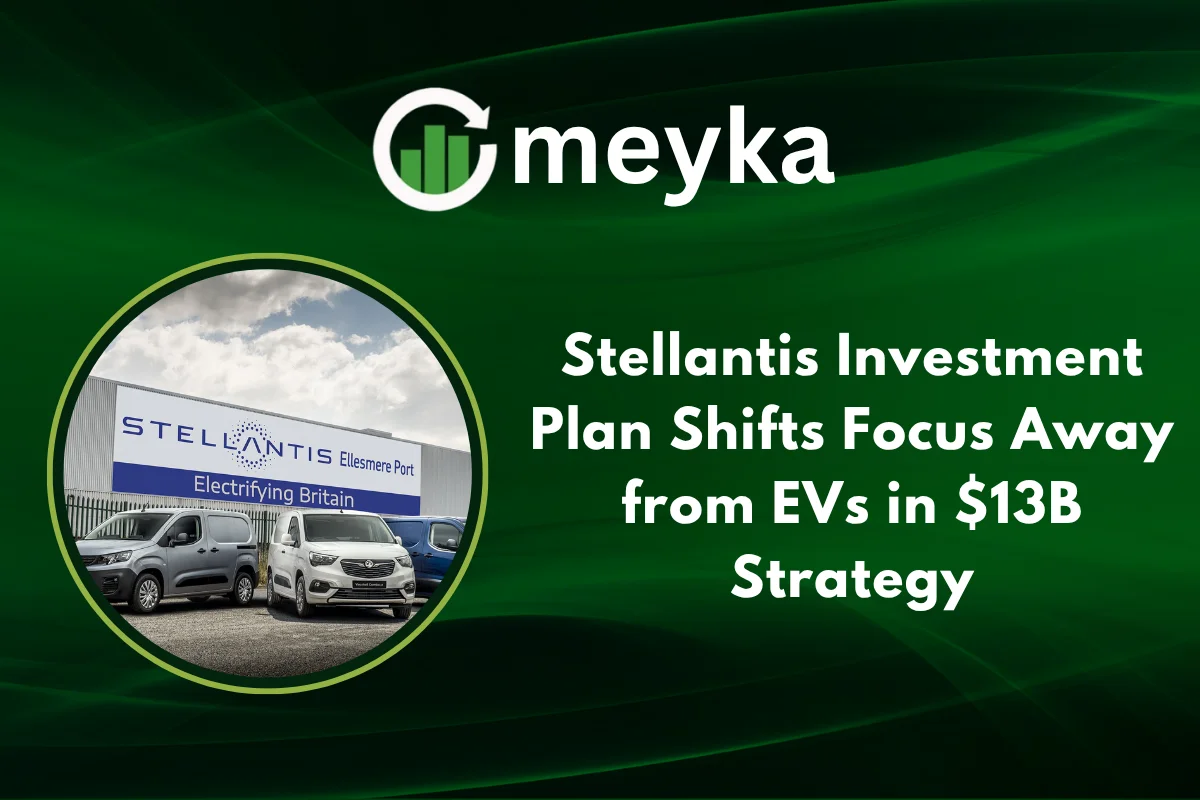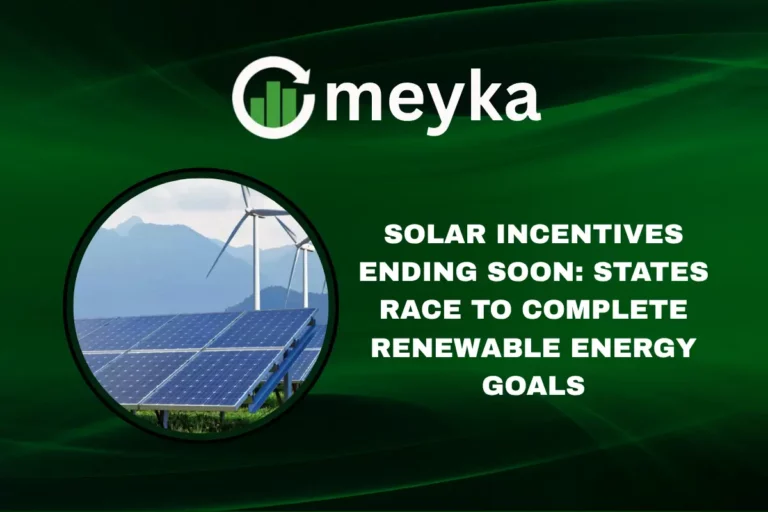Stellantis Investment Plan Shifts Focus Away from EVs in $13B Strategy
Stellantis has unveiled a bold $13 billion investment plan for its U.S. operations over the next four years, a move that signals a sharp recalibration of its Stellantis investment priorities. Instead of doubling down on a full EV push, the company is directing major capital toward internal combustion engines (ICE), hybrid and range-extended powertrains, and flexible platforms that can pivot among multiple energy sources. This strategic pivot has broad implications for the automaker’s financial outlook, the competitive auto industry, and EV stocks.
A New Strategic Direction: Why Stellantis Investment Is Shifting
Since the merger of Fiat Chrysler and PSA, Stellantis has positioned itself as an industry leader in electrification, pledging massive capital toward battery electric vehicles (BEVs). But the latest plan reveals a rethink: only one of five new vehicle programs under the $13B package is described as a range-extended EV, while the rest lean toward ICE, hybrids, and multi-energy architectures.
Stellantis’ CEO Antonio Filosa emphasizes that the strategy is not abandoning electrification, but rather optimizing flexibility. A key driver is the lackluster EV demand across large segments and the increasingly stringent qualification rules for battery tax credits. Many buyers remain hesitant to adopt full BEVs, especially in truck and SUV markets.
By anchoring the $13 billion toward plant reopenings, engine investments, hybrid platforms, and adaptable lines, Stellantis hedges its bets. The approach is pragmatic, giving the company optionality to pivot as regulations, incentives, and consumer tastes evolve.
Where the Money Goes: Breakdown of the $13 B U.S. Investment
The investment is spread across multiple states and product lines. Here’s a regional and program-level view:
Illinois & Midwest (Belvidere, Kokomo, etc.)
- Reopening the Belvidere Assembly Plant (Illinois) with over $600 million investment, intended to produce Jeep Cherokee and Compass models domestically, creating ~3,300 jobs.
- A new four-cylinder engine (GMET4 EVO) will be built in Kokomo, Indiana, starting in 2026, with over $100 million in investment.
Ohio / Michigan
- A new midsize truck program moves to Toledo, Ohio, with a nearly $400 million investment.
- Allocation of $130 million in Detroit’s Jefferson plant to produce the next-gen Dodge Durango (ICE or hybrid) by 2029.
- The Warren Truck Assembly Plant (Michigan) will be retooled for a range-extended EV and an ICE large SUV by 2028.
R&D, Supplier & Infrastructure
- Upgrades to parts suppliers, battery line intersections, and tooling to support both ICE and electrified platforms.
- 19 product refreshes and new powertrain programs through 2029.
In sum, the portfolio tilts toward hybrid and ICE growth, with electrification playing a supporting yet cautious role.
Impacts on Stock & Auto Market Dynamics
1. Stellantis Investment and Stock Market Signals
Investors and stock research teams are interpreting the pivot with mixed signals. On one hand, the $13B infusion sends a message: Stellantis is doubling down on profitability rather than an EV arms race. But critics argue that the shift could leave the company vulnerable should full electrification accelerate faster than expected.
In after-hours trading, Stellantis shares jumped ~4% following the announcement. Analysts are now reevaluating future earnings growth, free cash flow, and margin assumptions, particularly as the company delays its next strategic update to Q2 2026.
This repositioning places Stellantis somewhere between aggressive EV bets and cautious legacy bets, a middle ground that may attract investors seeking balance in stock market volatility across the auto sector.
2. Competitive Landscape & EV Stocks
Other automakers are also rethinking pure EV trajectories:
- General Motors is amplifying its hybrid commitment in North America while extending EV programs.
- Ford is pushing hybrid versions of trucks and delaying full BEV domination.
- Pure EV plays like Tesla remain benchmarks, yet face scaling and margin pressures.
Stellantis’ flexibility may give it a competitive advantage when EV stock sentiment cycles, especially if supply chain or regulatory risk upend rigid strategies.
3. Risks of Being Too Conservative
The biggest risk? Falling behind in a rapidly electrifying world. If lithium-ion battery costs plunge or charging infrastructure improvement accelerates, those betting heavily on ICE or hybrid could suffer.
Stellantis’ ability to adjust pace will be tested, especially in Europe, where emissions standards and zero-emissions mandates loom. Already, the company backed away from hydrogen vehicle development to focus on EVs and hybrids.
Why Stellantis Is Betting on Flexibility
This $13 billion plan signals a deeper philosophy, not to pick one technology winner, but to stay versatile across energy sources. Several strategic rationales explain this:
- Consumer hesitancy: EV adoption still lags in many U.S. markets, especially in trucks and rural areas.
- Regulatory ambiguity: Rules around battery credits, emissions, and mandates keep shifting.
- Margin stability: ICE and hybrid platforms have mature supply chains and more predictable margins.
- Execution risk: Building BEV capacity is capital-intensive and risky; mistakes are costly.
- Optionality: If EV demand surges later, Stellantis can scale those projects while still monetizing existing platforms.
Rather than doubling down on a single path, Stellantis’ Stellantis investment strategy is betting that the road ahead is multi-energy, not EV exclusive.
Looking Ahead: What to Watch
- Timing of launches: The GMET4 engine in 2026 and new vehicles (2028–2029) will reveal how execution plays out.
- EV tax credit eligibility: Changes in battery sourcing rules will influence product viability.
- Market response: Consumer adoption curves may validate or penalize this bet.
- Regulatory shifts: EU and U.S. mandates toward zero emissions could force faster pivots.
- Stock moves in the auto sector: Investor rotation into or out of EV stocks may shift sentiment for Stellantis.
Stellantis is essentially pressing pause on all-in EV urgency, preferring to build a resilient, adjustable platform that can flex with disruption.
Conclusion
Stellantis’ decision to channel its investment emphasis away from pure electric vehicle programs and toward multi-energy, flexible platforms is a bold move. It bets on adaptability over ideology, allowing them to hedge risk and hold options. In doing so, the company may appeal to investors wary of all-electric swings, even as it must guard against falling behind if the EV wave accelerates far beyond projections.
For those tracking AI stocks or market sectors tied to energy transition, Stellantis now presents an interesting case of industrial reinvention rather than disruption. As stock research updates flow in, this $13 billion pivot could become a defining moment in the auto investment narrative.
FAQs
Stellantis cites uneven EV demand, shifting tax credit rules, and the need for flexible product architectures. Rather than locking into full electrification, it prefers a strategy that hedges across ICE, hybrid, and range-extended systems.
The pivot has reignited optimism among investors who value cautious capital deployment. Shares rose following the announcement, and analysts are revising forward guidance to reflect more balanced investments across powertrains.
Yes, that is the key risk. If battery technology, charging infrastructure, or consumer demand outpace expectations, Stellantis may face a disadvantage compared to pure EV contenders. Success depends on its ability to pivot quickly.
Disclaimer:
This content is made for learning only. It is not meant to give financial advice. Always check the facts yourself. Financial decisions need detailed research.






